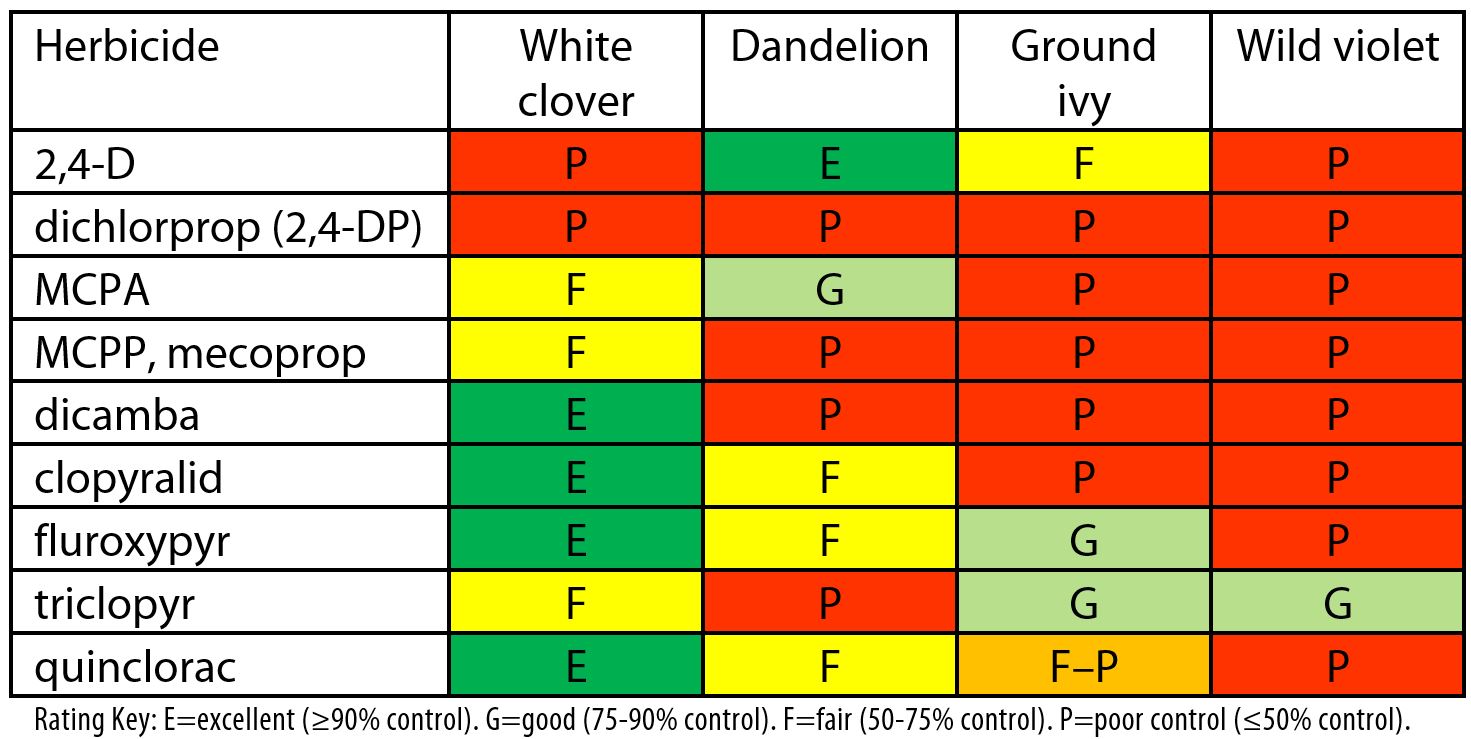The Right Way to Control Ground Ivy
The Rate and Product Make a Difference
By Aaron Patton, Ph.D.

The go-to product for broadleaf weed control is often a pre-mixture of phenoxy herbicides such as 2,4-D; mecoprop (MCPP); or MCPA, as well as the benzoic acid dicamba. These ingredients make up the majority of what are commonly referred to as “three-way” herbicides. These pre-mixtures are versatile in that they can be used on both cool- and warm-season grasses, they have excellent turf safety, they are available at low cost, and they provide consistent control of common broadleaf weeds such as dandelion and white clover. However, some other tough broadleaf weeds such as ground ivy and wild violet are poorly controlled with “three-way” herbicides and applicators should chose products with triclopyr for better results.
Ground ivy — sometimes called creeping Charlie by homeowners — is a tough-to-control broadleaf weed found growing in full sun and shade. Cultural practices such as fertilizing, mowing, irrigation, and overseeding do not effectively reduce ground ivy so herbicides are needed. In cool-season turfgrass, herbicides that work best to control ground ivy include fluroxypyr and triclopyr. Although there are many products that contain triclopyr, triclopyr by itself at 1 quart/A of Turlon Estra Ultra typically provides the best results in our research. Additionally, good ground ivy control can be achieved by tank-mixing triclopyr at 1 pint/A tank-mixed with another herbicide containing 2,4-D.
MRTF member Gary Crum (Lawn Tamer in Frankfort, IN) asked me in 2018 if all formulations of triclopyr were equally effective at controlling ground ivy. I assumed that they all might be, but all good questions deserve an answer. In 2019, I conducted an experiment that tested four different formulations of triclopyr including the ester (Turflon Ester Ultra), acid (Trycera), amine (Garlon 3A), and choline (Vastlan) formulation. NOTE: Garlon and Vastlan are not labeled for managed turf but are used in pastures. All were applied at three rates equivalent to 0.25, 0.5 or 1.0 lbs acid equivalent (ae)/Acre. For Turflon Ester Ultra, this was equivalent to 0.5 pint, 1.0 pint, and 1 quart per acre, respectively. The results showed that all four formulations worked similar to one another (91-96% ground ivy control averaged across the three rates) with all providing improved ground ivy control at the higher rates. Six weeks after an application of the herbicides in early May, the low, medium, and high rates resulted in 85%, 96%, and 99% ground ivy control, respectively.
Herbicides available to turf professionals for controlling tough broadleaf weeds like ground ivy. Chose products with triclopyr and apply at the high label rate for best results with wild violet. NOTE: Not all are labeled for residential turf.
| Key ingredient | Commercially available herbicides containing one of the listed key ingredient(s)1 |
| fluroxypyr | Battleship III, Change Up, Chaser Ultra 2, Escalade 2, GameOn, Last Call, Momentum FX2, Momentum 4-Score, Sure Power, Tailspin, Tetra, Vista XRT |
| triclopyr | 4-Speed XT, Aquasweep, Battleship III, Chaser, Chaser 2 amine, Confront, Cool Power, Cross-raod, Eliminate, Everette, Foundation, Horsepower, Momentum FX2, Momentum 4-Score, Tailspin, Three-Way Ester II, Sure Power, Tetra, Triad TZ Select, Triclopyr 4, Turflon II amine, Turflon Ester Ultra, Trycera, TZONE |
1 Ingredient may be the only ingredient in the herbicide or be one of up to four ingredients in the herbicide.
In summary, sometimes the tough to control weeds aren’t really that tough, we are just picking the wrong product. All formulations of triclopyr are effective at controlling ground ivy and by selecting products with more triclopyr in the formulation or by applying a higher rate of triclopyr (within label limits), it is possible to improve ground ivy control. For more information on weed control, get a copy of Turfgrass Weed Control for Professionals Publication.

